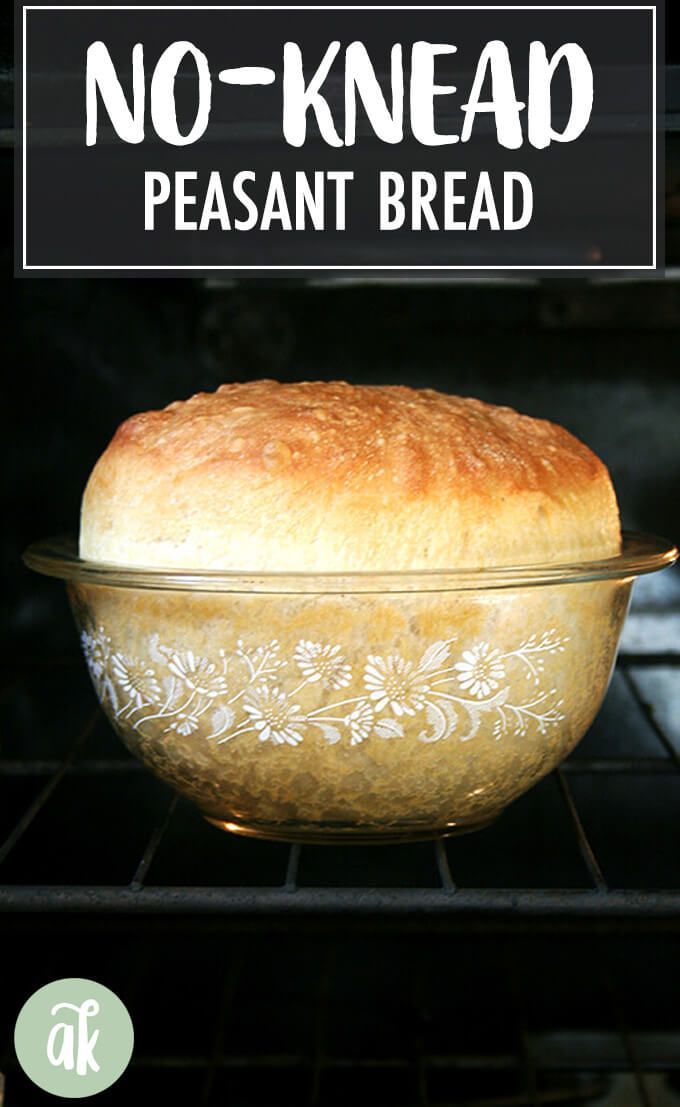17 diy Food bread ideas
My Mother’s Best, No-Knead Peasant Bread Recipe | Alexandra’s Kitchen

via: alexandracooks.com
No-knead peasant bread — the best, easiest bread you will every make. This bread takes five minutes to whisk together — there’s no need to flour a work surface or get your hands dirty. This bread might just change your life. #peasantbread #bread #noknead #diy #breadbaking The bowls: The cheapest, most widely available 1-qt bowl is the Pyrex 322. Update: These bowls are becoming harder to find and more expensive. As a result, I’m suggesting this cheaper option: the Pyrex 3-piece set. You can split the dough in half as always (see recipe) and bake half in the 1-quart bowl and half in the 1.5 quart bowl. The loaves will not be the same shape, but they will be delicious nonetheless. Vintage Option: The vintage Pyrex #441 bowl is my favorite bowl to bake the peasant bread in — the perfectly round shape of the bowl creates a beautiful round loaf. It belongs to a set of four nesting bowls (also called Cinderella bowls, specifically the Pyrex #441, #442, #443, #444), which I have purchased from Ebay. I absolutely love the set in general, but I love most of all that I can bake the whole batch of peasant bread in the second largest bowl (#443) and half of the batch in the smallest bowl (#441). The set runs anywhere from $35 to $50 or higher depending on the pattern of the Pyrex. The bread: This is a sticky, no-knead dough, so, some sort of baking vessel, such as pyrex bowls (about 1-L or 1-qt) or ramekins for mini loaves is required to bake this bread. You can use a bowl that is about 2 qt or 2 L in size to bake off the whole batch of dough (versus splitting the dough in half) but do not use this size for baking half of the dough — it is too big. Yeast: I buy SAF Instant Yeast in bulk from Amazon I store it in my fridge or freezer, and it lasts forever. If you are using the packets of yeast (the kind that come in the 3-fold packets), just go ahead and use a whole packet — It’s 2.25 teaspoons. I have made the bread with active dry, rapid rise, and instant yeast, and all varieties work. The beauty of instant yeast is that there is no need to “proof” it — you can add the yeast directly to the flour. I never use active-dry yeast anymore. If you have active-dry yeast on hand and want to use it, here’s how: In a small mixing bowl, dissolve the sugar into the water. Sprinkle the yeast over top. There is no need to stir it up. Let it stand for about 10 to 15 minutes or until the mixture is foamy and/or bubbling just a bit — this step will ensure that the yeast is active. Meanwhile, in a large bowl, whisk together the flour and salt. When the yeast-water-sugar mixture is foamy, stir it up, and add it to the flour bowl. Mix until the flour is absorbed. Troubleshooting: You can find step-by-step video instruction here. Several commenters have had trouble with the second rise, and this seems to be caused by the shape of the bowl they are letting the dough rise in the second time around. Two hours for the second rise is too long. If you don’t have a 1-qt bowl, bake 3/4 of the dough in a loaf pan and bake the rest off in muffin tins or a popover pan. The second rise should take no more than 30 minutes. Also, you can use as many as 3 cups of whole wheat flour, but the texture changes considerably. I suggest trying with all all-purpose or bread flour to start and once you get the hang of it, start trying various combinations of whole wheat flour and/or other flours. The single most important step you can take to make this bread truly foolproof is to invest in a digital scale. This one costs under $10. If you are not measuring by weight, do this: scoop flour into the measuring cup using a separate spoon or measuring cup; level off with a knife. The flour should be below the rim of the measuring cup. Here’s a printable version of this recipes that’s less wordy: Peasant Bread Recipe, Simplified Peasant Bread Fans! There is now a book: Bread Toast Crumbs, a loaf-to-crumb bread baking book, filled with tips and tricks and answers to the many questions that have been asked over the years. In the book you will find 40 variations of the master peasant bread recipe + 70 recipes for using up the many loaves you will bake. Learn more about the book here or buy it here.